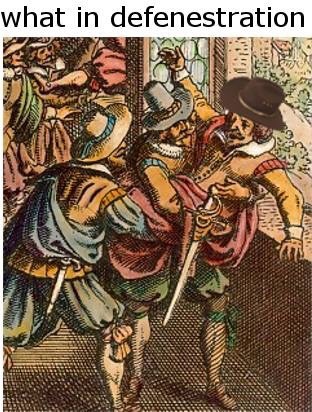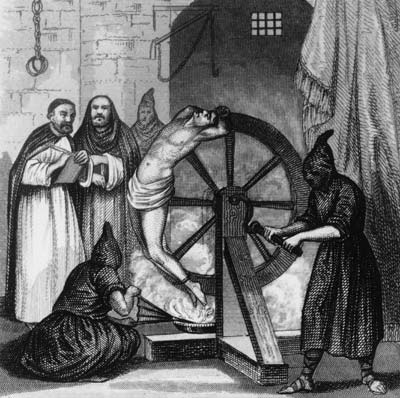Minna Chow
Sharii Liang
AP European History 🇪🇺
335 resourcesSee Units
In this guide, we'll give a brief overview of some of the major religious conflicts of the age.
The key idea is that matters of religion influenced and were influenced by political factors. These religious conflicts often had political interests; political conflicts often mixed religion into them.
An example of this is how the religious changes sweeping Europe interacted with the existing political tension between the noblitiy and the monarchy. For years, nobility and monarchies did their best to limit the other’s power. With the rise of religious reforms, many nobles switched to Protestant sects while many monarchies remained devout Catholics. (This was the case in France.) In some countries (read: England) the monarch became Protestant (Anglican) while a large group of nobles remained Catholic.
Let's go by region as we discuss the Wars of Religion.
🎥 Watch: AP European History - Martin Luther and Reformation
German Religious Conflicts
The two major religious conflicts you need to know in the area that's roughly modern-day Germany are the German Peasants' War and the Schmalkaldic Wars. The most important thing about the Schmalkaldic Wars is the Peace of Augsburg that concluded them.
German Peasants' War (1524–25)
In Germany, Martin Luther’s ideas influenced German peasants to revolt (German Peasants’ War). Hundreds of thousands of peasants rose up against their land owners to fight for social equality and religious/economic freedom. The violence of these peasants horrified Luther, and he actually supported the aristocrats in putting down the revolt through any means necessary.
Schmalkaldic Wars (1546-47) and the Peace of Augsburg (1555)
In the Holy Roman Empire (which was neither Holy, nor Roman), the Habsburgs rulers were faced with two problems: an expanding Ottoman Empire on the East and the rise of Protestantism in the West. In the West, Charles V would confront Martin Luther about his 95 Theses at the Diet of Worms, but it was much too late. Luther’s ideas had spread, and there was nothing Charles V could do about it.
The Habsburg rulers were the largest, most influential family in Europe. You could find them in practically every royal family. They were the rulers of the Holy Roman Empire and devout Catholics. When the German states and the princes under them converted to Protestantism (forming a group known as the Schmalkaldic League), Charles V (current ruler of the HRE) fought them in the Schmalkaldic Wars before coming to a resolution known as the Peace of Augsburg (1555) . From then on, German princes could choose between Lutheranism and Catholicism only (no Calvinism!)
The Peace of Augsburg

Image Courtesy of Wikimedia
French Religious Conflicts
The major conflict here is the French Wars of Religion.
French Wars of Religion (1562 - 1598)
In France, Catholics fought against the Huguenots (another term for French Calvinists). This tension was even prominent in the aristocracy and monarchy. Protestant nobles struggled with a Catholic monarchy, and this discourse rippled down to the lower levels of society before culminating into the St. Bartholomew Day’s Massacre (1572), a major religious massacre that exacerbated the conflict.
The French Wars of Religion would eventually result in the War of the Three Henrys. One of those three Henrys, Henry of Navarre, became King Henry IV. Originally a Protestant, he converted to Catholicism and drafted the Edict of Nantes, granting rights of religious liberty to the Huguenots
🎥 Watch: AP European History - French Wars of Religion
Flag of the Catholic League
.svg.png?alt=media&token=105b718e-0039-4f19-974f-335f8b70bebd)
Image Courtesy of Wikimedia
“Paris is worth a mass.”
King Henry IV (Henry III of Navarre)
The Thirty Years' War (1618 - 1648)
The Thirty Years' War was a major religious conflict that doesn't quite fit in any one region, so it's getting its own catagory.
In Bohemia (the equivalent of the present day Czech Republic), the election of a new king would cause a division between Catholics and Protestants. Afraid that the new Catholic king, Ferdinand II, would strip away Protestant rights, some Bohemian leaders elected Frederick V, a Protestant.
Although it was certain that Ferdinand II would end up on the throne, since he was personally chosen by the previous King, that didn’t stop Protestant opposition. In fact, the supporters of Frederick V were so peeved, they threw some of Ferdinand II’s Catholic representatives out of a 69 feet high window! (Miraculously, the representatives lived.) This event, called the Defenestration of Prague (defenestrate = a fancy word for throwing someone out a window), sparked Europe’s bloodiest religious war, the Thirty Years’ War.

In the Thirty Years’ War, Denmark, Sweden, and France all exploited the conflict in Bohemia for their own agendas. What started off as a religious war would expand into a political one as Denmark joined on the side of the Protestants to protect religious freedom in his, and other kingdoms, as well as expand his land. Sweden had the same reasons as Denmark for joining, but France, despite being Catholic, joined on the Protestant side due to a rivalry with the Habsburgs. (For more information about the specifics of the war, consult the table below.)
The Thirty Years' War ended in 1648 with the Peace of Westphalia. While the Peace of Augsburg allowed German princes to choose between Lutheranism and Catholicism, the Peace of Westphalia granted the option to choose to other princes, bishops, and local leaders. The peace destroyed any remaining medieval ideas of universal Christianity, and sped up the decline of the Holy Roman Empire.
The Thirty Years' War In Detail
Phase | Place & Time | Important Players | Beginning Event | Ending Event |
Bohemian | Bohemia, 1618-1625 | Ferdinand II, Johann Tserclaes of Tilly, Frederick V, Count Ernst von Mansfeld | The Defenestration of Prague | Battle of White Mountain (Catholic victory) |
Danish | Germany and Denmark, 1625-1629 | Ferdinand II, Albrecht von Wallenstein, Christian IV | Frederick V flees to Holland & Denmark supports Protestants | Peace of Lübeck (Catholic victory) |
Swedish | Germany, 1630-1635 | Gustavus Adolphus, Wallenstein, Cardinal Richelieu | Invasion of Germany by Sweden’s king | Death of Swedish King, Gustavus Adolphus, in battle |
French AKA Franco-Swedish | Germany, 1635-1648 | Cardinal Richelieu, HRE, Maximilian of Bavaria | France gets directly involved in the fighting | Peace of Westphalia, 1648 |
🎥 Watch: AP European History - Thirty Years' War
Manipulative States
Certain countries sought to exploit religion for their own gains. They saw it as a reason (or justification) to achieve national unity or more power. Below, we'll detail some of the ways states used religious turmoil to their advantage.
Spain: The Spanish Inquisition
Spain was the Catholic Church’s biggest supporter. Ruled by Ferdinand of Aragon and Isabella of Castile, it took this time of religious turmoil to get rid of all the Muslims and Jews in the nation. The Spanish Inquisition sought out any people who weren’t Catholic and gave them two options: convert or leave.

Image Courtesy of Getty Images
England: Henry VIII Changes The Church
In England, King Henry VIII faced a dilemma that would forever change the country: how was he going to divorce his wife, Catherine of Aragon, if the Pope wouldn’t let him? 💔 His solution was to leave the Catholic Church and create his own.
This divorce began the English Reformation, and King Henry became the Supreme Head of the Church of England during this time. ♚ After his death, the nation would go through another rapid change back to Catholicism for a short while with Mary I (Bloody Mary!) until the English Reformation returned and culminated with Elizabeth I.
Rulers and Consorts of England
Name | Cause of Death | Any Children? | Position |
King Henry VIII | Natural Causes | 3 legitimate: Edward VI, Mary I, & Elizabeth I | King of England |
Catherine of Aragon | Heart Cancer | Mary I | First Wife |
Anne Boleyn | Beheaded | Elizabeth I | Second Wife |
Jane Seymour | Childbirth | Edward VI | Third Wife |
Anne of Cleves | Cancer | None | Fourth Wife |
Catherine Howard | Beheaded | None | Fifth Wife |
Catherine Parr | Childbirth | None that matter | Sixth Wife |
Edward VI | Tuberculosis | None | King of England |
Lady Jane Grey | Executed | None that matter | Queen of England |
Mary I | Disease | None | Queen of England |
Elizabeth I | Sepsis | None | Queen of England |
The End of an Era
As the continent grew bloodier and bloodier, it was clear to everyone that a unified Catholic Europe was no longer possible. Various legal agreements created after conflicts allowed for religious plurality.
Even nations that weren’t involved in conflicts, like Poland and the Netherlands, had religious pluralism. Catholicism was still the main religion in these two states, with Phillip II of Spain persecuting non-Catholics in the Netherlands, but Calvinism and various Protestant sects were allowed. 🛐
Browse Study Guides By Unit
🎨Unit 1 – Renaissance & Exploration
⛪️Unit 2 – Reformation
👑Unit 3 – Absolutism & Constitutionalism
🤔Unit 4 – Scientific, Philosophical, & Political Developments
🥖Unit 5 – Conflict, Crisis, & Reaction in the Late 18th Century
🚂Unit 6 – Industrialization & Its Effects
✊Unit 7 – 19th Century Perspectives & Political Developments
💣Unit 8 – 20th Century Global Conflicts
🥶Unit 9 – Cold War & Contemporary Europe
📚Study Tools
🤔Exam Skills
👉Subject Guides

Fiveable
Resources
© 2025 Fiveable Inc. All rights reserved.